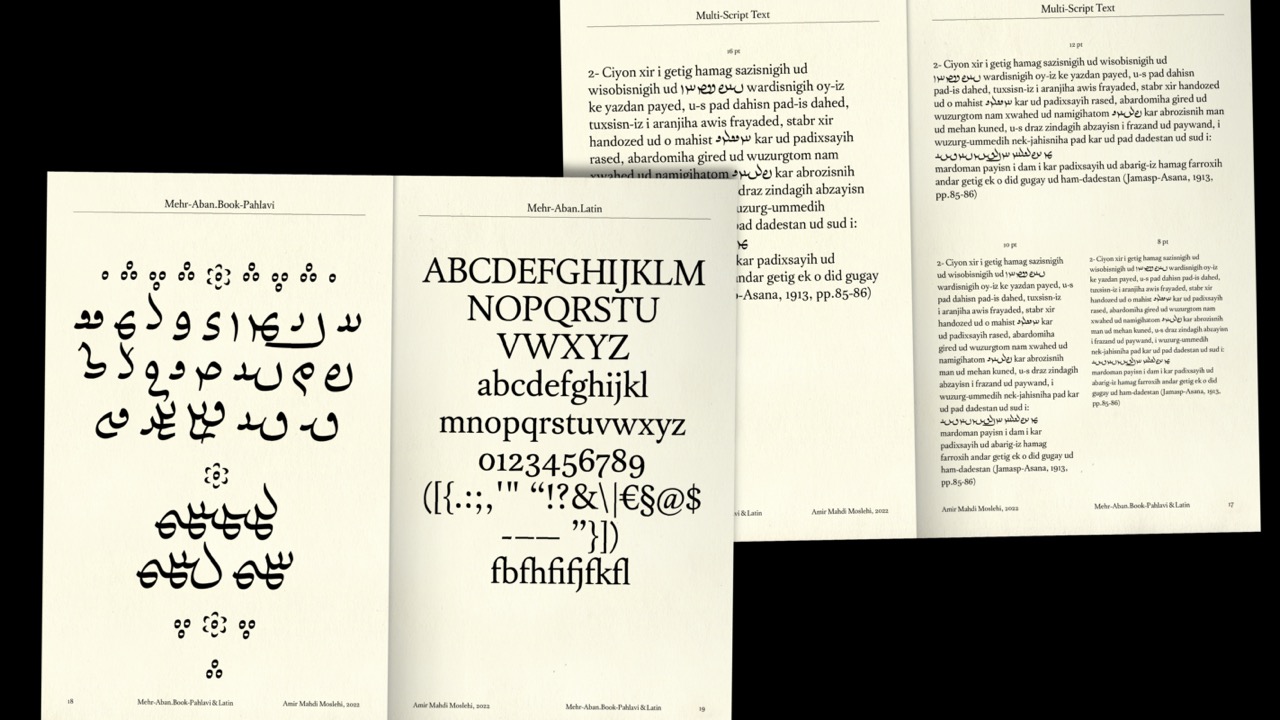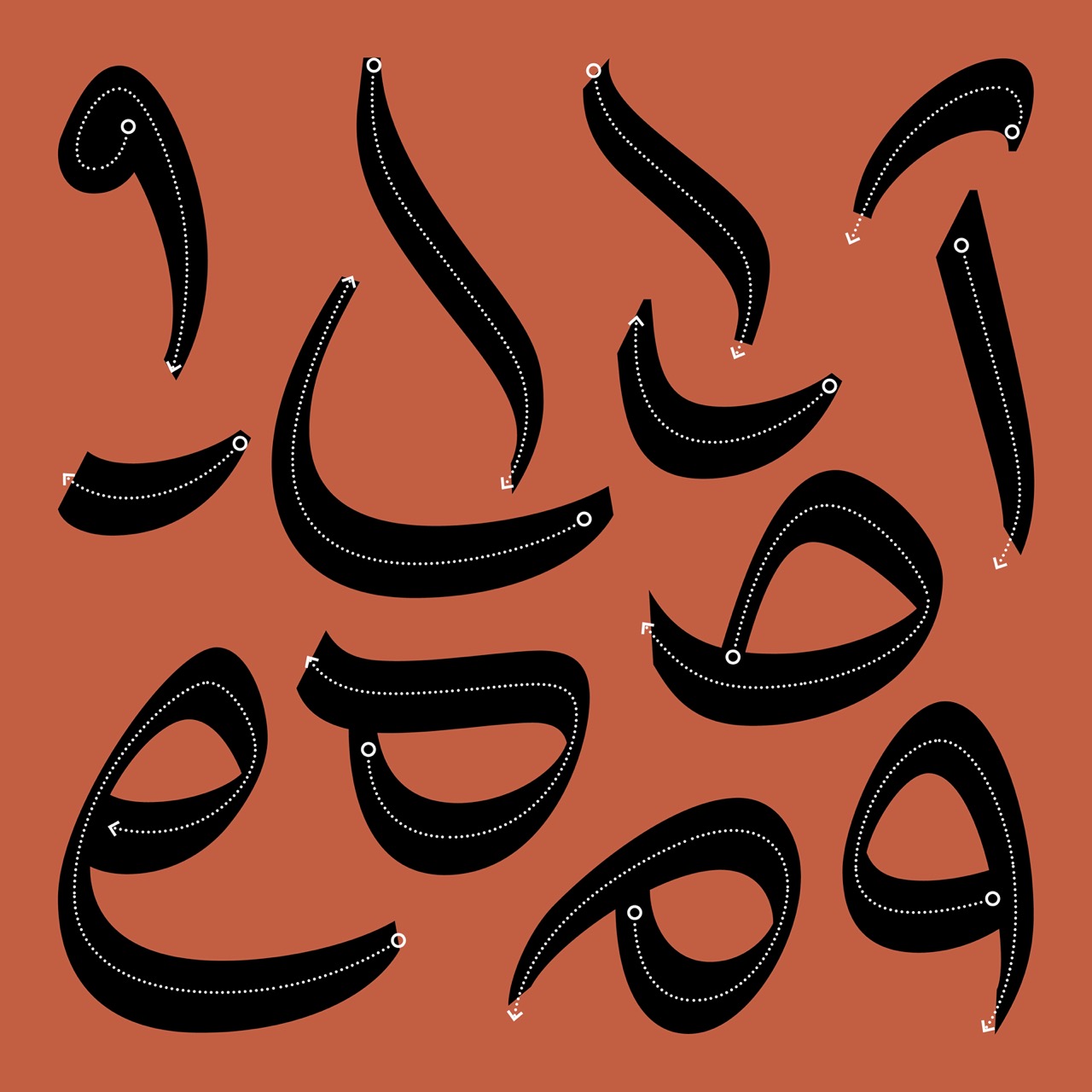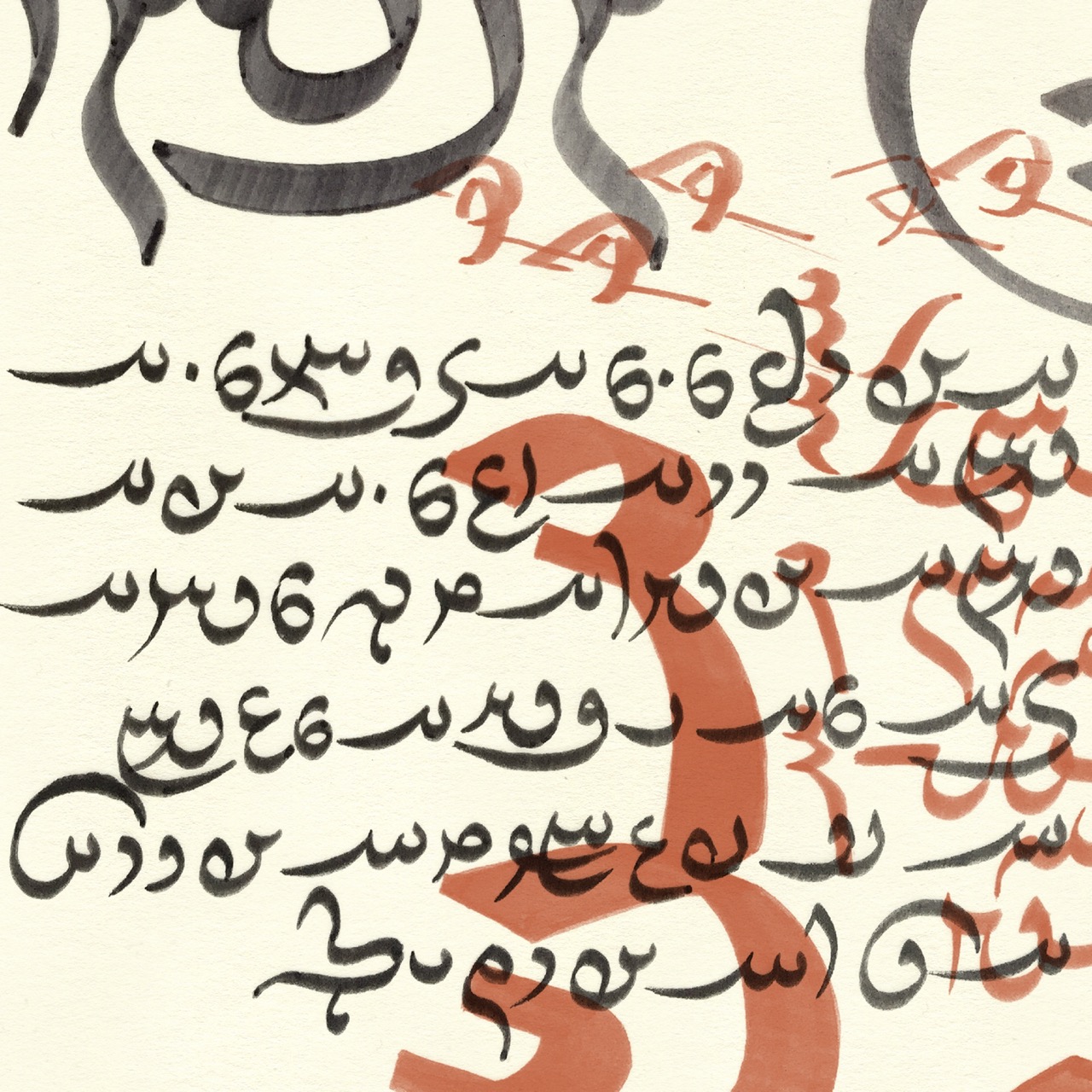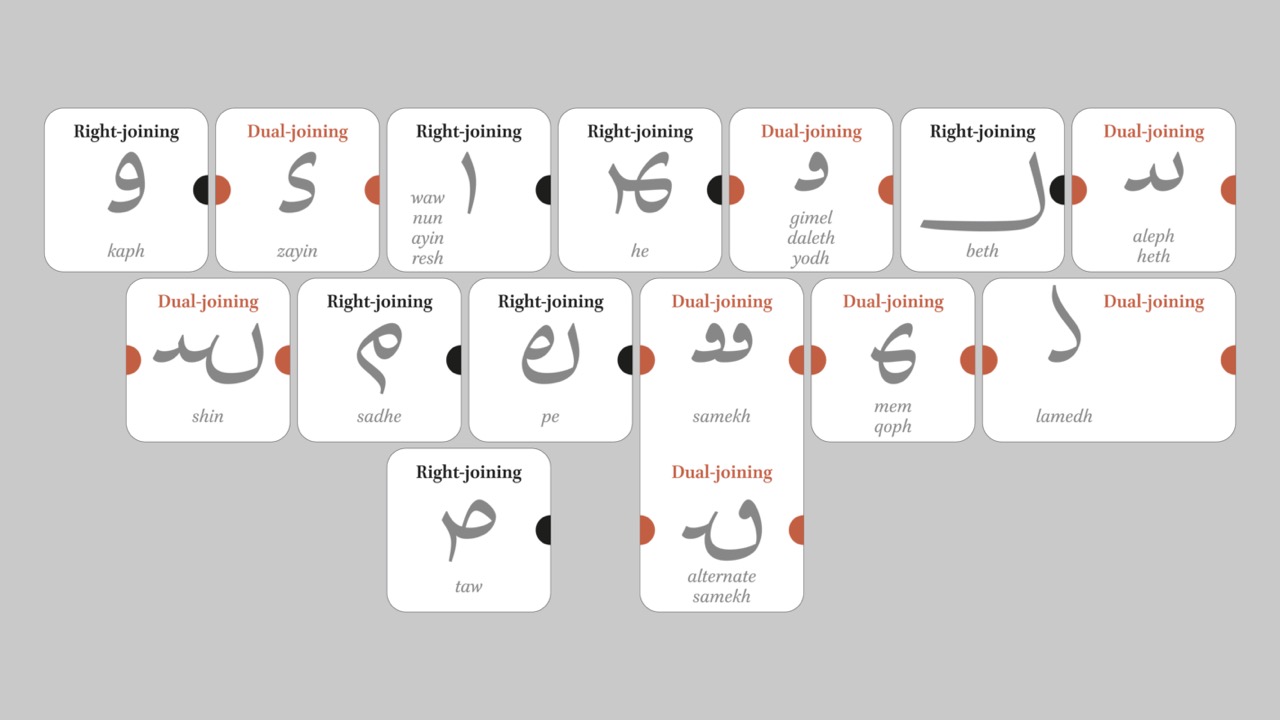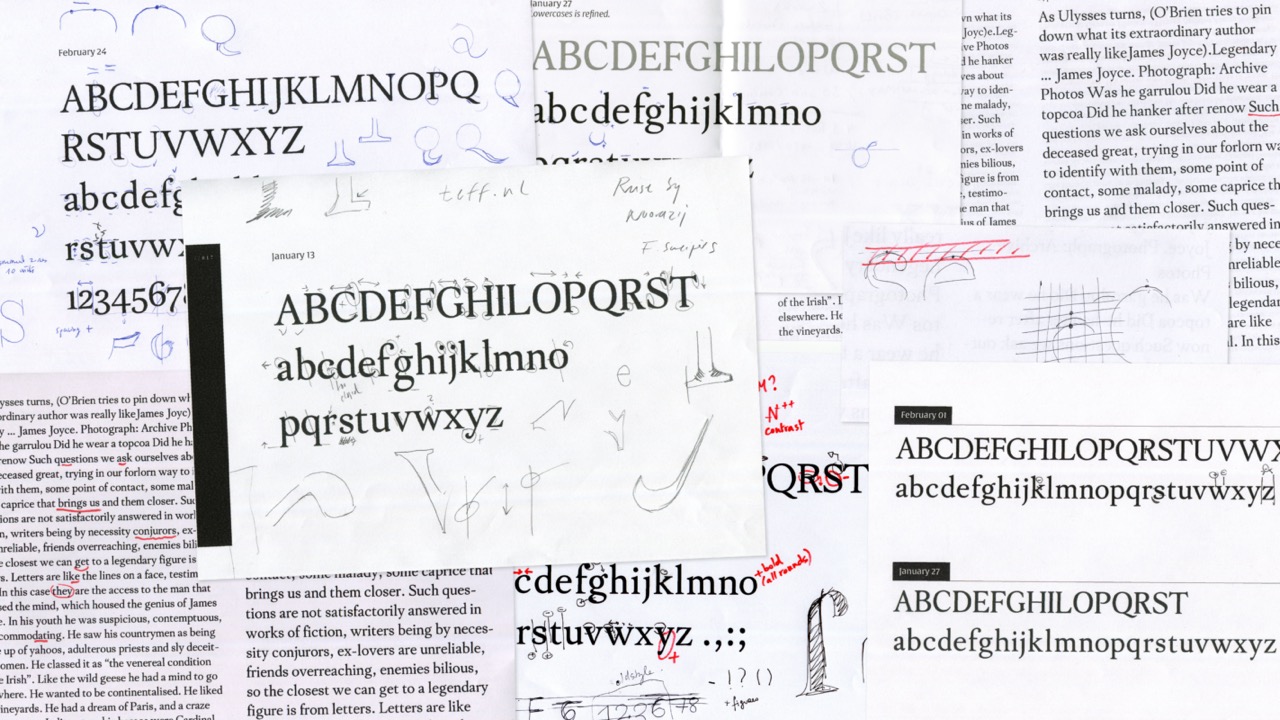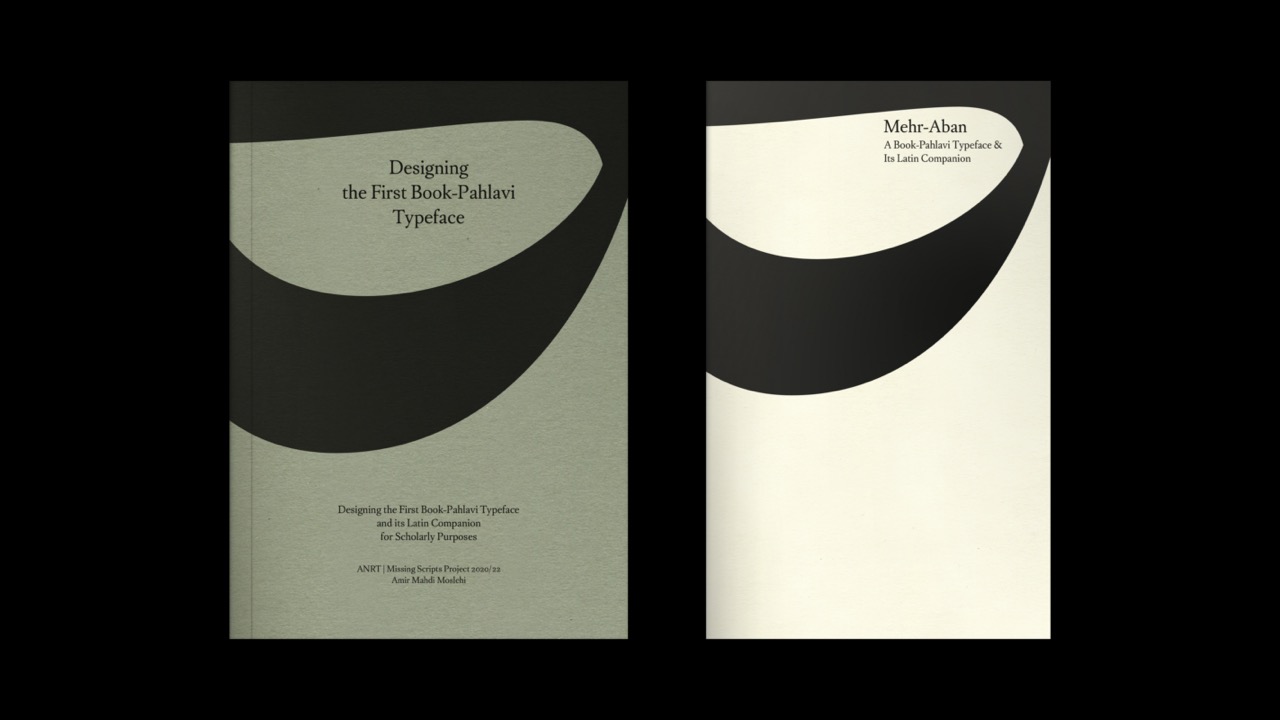The Missing script 2020: Book Pahlavi
Amir Mahdi Moslehi zoomDesigning the first typeface for the prominent Iranian writing system, Book Pahlavi, and its Latin companion as part of the Missing Scripts Research programme.
Book Pahlavi was the most significant script used for writing until the end of the Sassanian era (sixth century CE). This script is critical for the linguistic studies of Iranian languages and for understanding the culture of Iranian people during the pre-Islamic and early Islamic eras. It is also of religious importance to the Zoroastrian community, as most of their surviving religious texts were written in Pahlavi.
Designing a contemporary typeface that incorporates all features of the Book Pahlavi script is crucial for digitising the surviving texts in Pahlavi to make them available to all Zoroastrian people. It will also be an essential digital tool for scholars, which will have the possibility to search specific words and analyse the ancient texts.
For the design of the Book Pahlavi’s typeface, I aimed to reach an academic authenticity in terms of respecting the historical background of the letterforms and the writing system, with the linguistic supervision of Arash Zeini – a postdoctoral at the University of Oxford, and a Manuscriptologist of Middle Persian texts.
Although most of the earliest Pahlavi manuscripts date from the fourteenth century A.D., the Book-Pahlavi script must have developed in the first century A.D. Thus, the models used for designing the Book-Pahlavi typeface belong to the last six centuries and present different calligraphic styles. Inspired by this, the Book-Pahlavi typeface and its Latin companion have a calligraphic flavour in order to integrate the two scripts with a disparate evolution history in a unique context.
With:
Pr Johannes Bergerhausen, Hochschule Mainz (DE) / decodeunicode.org
Dr Deborah Anderson, Université de Berkeley (USA) / Script Encoding Initiative
